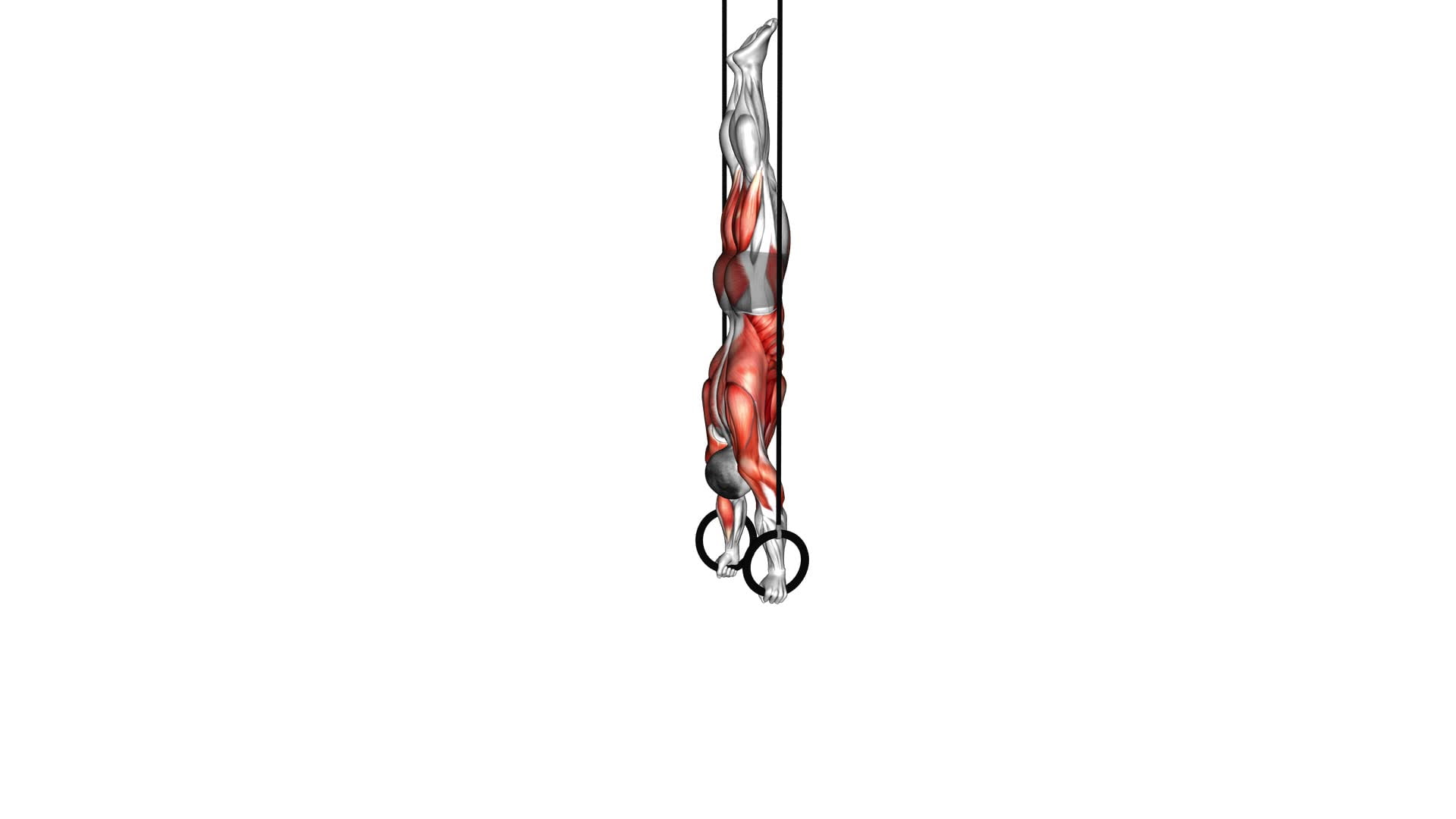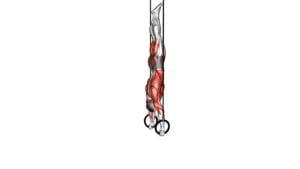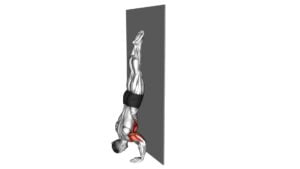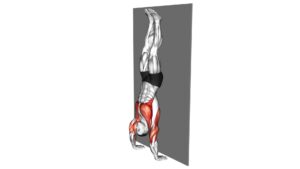Ring Handstand (male) – Video Exercise Guide & Tips

Are you ready to take your handstand skills to the next level? Look no further than the Ring Handstand!
Watch This Exercise Video
This intense exercise will challenge your strength, balance, and flexibility all at once.
In this video exercise guide, we'll show you step-by-step how to master the Ring Handstand. Avoid common mistakes and learn advanced variations to keep pushing yourself.
Get ready to defy gravity and impress everyone with your impressive handstand skills. Let's get started!
Key Takeaways
- Improved upper body strength
- Enhanced core stability
- Increased balance and proprioception
- Activation of multiple muscle groups simultaneously
Benefits of the Ring Handstand
The ring handstand offers numerous benefits for you, including improved upper body strength, core stability, and balance. Engaging in this exercise can lead to significant health benefits, as it requires you to activate multiple muscle groups simultaneously.
One of the primary advantages of the ring handstand is its ability to enhance core strength. As you balance your body upside down on the rings, your core muscles are forced to work harder to maintain stability. This increased activation of the core muscles not only improves your overall strength but also helps to develop a strong and stable midsection.
Additionally, the ring handstand also contributes to improved upper body strength. By supporting your body weight on the rings, you engage your shoulders, arms, and chest muscles, resulting in increased muscular endurance and strength.
Furthermore, this exercise challenges your balance and proprioception, as you must maintain control while balancing on the unstable rings. This not only improves your physical coordination but also enhances your overall body awareness.
Now that you understand the health benefits of the ring handstand, let's move on to discussing the necessary equipment and set-up for this exercise.
Equipment and Set-up for the Ring Handstand
To properly set up for the ring handstand, you'll need a sturdy pair of gymnastic rings and a secure anchor point to hang them from. When it comes to equipment options, there are a few things to consider.
Firstly, make sure you choose gymnastic rings that are well-made and can support your body weight. Look for rings that are made from durable materials such as wood or high-quality plastic. Additionally, ensure that the rings have adjustable straps so you can easily adjust the height as needed.
As for the anchor point, it's crucial to find a secure and stable structure to hang the rings from. This could be a pull-up bar, a sturdy tree branch, or even a ceiling beam. Just make sure that whatever you choose can handle the load and won't pose any safety risks.
Now that you have your equipment and set-up ready, you can begin working on your handstand progressions.
Step-by-Step Guide to the Ring Handstand
To start mastering the ring handstand, you'll want to practice regularly and gradually build your strength and balance. Follow these step-by-step guidelines to help you progress towards mastering the ring handstand.
- Warm up: Begin with a thorough warm-up to prepare your body for the demands of the exercise. This may include dynamic stretches, mobility exercises, and wrist warm-ups.
- Handstand progressions: Start with basic handstand progressions on the floor, focusing on developing a solid body line and balance. Practice holding a straight handstand against a wall for stability.
- Ring support hold: Once you feel comfortable with the handstand, move to the rings. Begin by practicing the ring support hold, where you hold yourself up on the rings with your arms fully extended. This will help build the necessary upper body strength and stability.
- Ring handstand negatives: Gradually progress to ring handstand negatives. Start from the support hold position and slowly lower yourself into a handstand position, maintaining control and balance throughout the movement.
- Full ring handstand: Finally, work towards achieving a full ring handstand. Practice kicking up into a handstand position and holding it on the rings. Focus on maintaining a tight body line, engaging your core, and finding your balance.
Common Mistakes to Avoid in the Ring Handstand
Avoid rushing into the ring handstand without proper preparation and technique. It's important to be aware of common mistakes that can occur during this exercise and how to improve upon them.
One common mistake isn't having enough upper body strength. Without sufficient strength, it can be difficult to maintain balance and control in the handstand position. To improve, focus on strengthening your shoulders, arms, and core through exercises such as push-ups, shoulder presses, and planks.
Another mistake isn't engaging the core muscles properly. Your core plays a crucial role in maintaining stability and balance during the handstand. To improve, practice exercises that target your core, such as hollow body holds and leg lifts.
Poor alignment is also a common mistake. It's important to keep your body in a straight line from your fingertips to your toes. Avoid arching or rounding your back, as this can lead to loss of balance. Strengthening your back and practicing exercises that promote proper alignment, such as wall handstands, can help improve your form.
Lastly, rushing the handstand without proper progressions can lead to injury. It's important to gradually build up your strength and technique before attempting the full handstand. Start with exercises such as wall walks and handstand holds against a wall, gradually progressing to freestanding handstands.
Advanced Variations and Progressions for the Ring Handstand
Now let's explore some challenging variations and progressions to take your ring handstand to the next level. Here are some advanced techniques and training drills that can help you improve your skills:
- Straddle Ring Handstand: Start in a regular ring handstand position and slowly open your legs into a straddle position. This requires more strength and control in your core and shoulder muscles.
- Pike Press Handstand: Begin in a standing position and fold forward at your hips, keeping your legs straight. Place your hands on the ground and walk them back until you're in a pike position. From here, lift your legs off the ground and press up into a handstand position. This variation adds an extra challenge to your balance and shoulder strength.
- One-Arm Ring Handstand: Once you have mastered the regular ring handstand, you can progress to performing it with just one arm. This requires immense strength and stability in your supporting arm.
- Handstand Push-ups on Rings: This exercise involves performing a handstand on the rings and then lowering yourself down into a push-up position. This helps to develop strength in your shoulders, chest, and triceps.
Incorporating these advanced variations and progressions into your ring handstand training will challenge your body in new ways and help you continue to improve your skills. Practice these techniques regularly to build strength, stability, and control in your ring handstand.
Frequently Asked Questions
How Long Does It Take to Master the Ring Handstand?
Mastering the ring handstand takes time and practice. It's hard to say exactly how long it will take, as it varies from person to person. However, with consistent training and dedication, you can make progress.
The benefits of the ring handstand include improved balance, core strength, and upper body stability. Some common mistakes to avoid aren't engaging your core, arching your back, and not maintaining proper alignment.
Keep practicing and you'll get there!
Are There Any Specific Stretches or Warm-Up Exercises Recommended Before Attempting the Ring Handstand?
Before attempting the ring handstand, it's important to warm up properly. Engaging in specific warm-up exercises can help prepare your body and prevent injuries.
Some recommended stretches include wrist stretches, shoulder rotations, and hip openers. These exercises help improve flexibility, increase blood flow, and loosen up your muscles.
Can the Ring Handstand Help Improve Other Gymnastics Skills?
The ring handstand is a challenging exercise that can greatly improve your balance and core strength. By mastering the ring handstand, you'll develop the necessary strength and stability to excel in other gymnastics skills.
It requires a high level of control and body awareness, which transfers to various movements on the rings.
Is It Necessary to Have Prior Gymnastics Experience to Attempt the Ring Handstand?
To attempt the ring handstand, prior gymnastics experience isn't necessary. The ring handstand progressions can help you build the necessary strength and stability. By practicing this exercise, you can improve your overall strength and stability, which can benefit your performance in other gymnastics skills.
The ring handstand is a challenging yet rewarding exercise that can be achieved with dedication and proper form. So go ahead and give it a try, regardless of your prior experience in gymnastics.
Are There Any Safety Precautions or Modifications for Individuals With Wrist or Shoulder Injuries When Practicing the Ring Handstand?
When practicing the ring handstand, it's important to consider safety modifications, especially if you have wrist or shoulder injuries. Common injuries in these areas can be aggravated by the strain of the exercise. To prevent further harm, you may need to modify the position or limit the range of motion.
Always consult with a professional or physical therapist for specific modifications tailored to your injury. Safety should be a top priority when attempting any exercise.
Conclusion
In conclusion, the ring handstand is a challenging exercise that offers numerous benefits for strength and balance. By following the step-by-step guide and avoiding common mistakes, you can master this exercise and advance to more challenging variations.
The equipment and set-up required for the ring handstand are essential for proper execution.
Incorporating this exercise into your fitness routine can lead to significant improvements in your overall athleticism.

Author
Years ago, the spark of my life’s passion ignited in my mind the moment I stepped into the local gym for the first time. The inaugural bead of perspiration, the initial endeavor, the very first surge of endorphins, and a sense of pride that washed over me post-workout marked the beginning of my deep-seated interest in strength sports, fitness, and sports nutrition. This very curiosity blossomed rapidly into a profound fascination, propelling me to earn a Master’s degree in Physical Education from the Academy of Physical Education in Krakow, followed by a Sports Manager diploma from the Jagiellonian University. My journey of growth led me to gain more specialized qualifications, such as being a certified personal trainer with a focus on sports dietetics, a lifeguard, and an instructor for wellness and corrective gymnastics. Theoretical knowledge paired seamlessly with practical experience, reinforcing my belief that the transformation of individuals under my guidance was also a reflection of my personal growth. This belief holds true even today. Each day, I strive to push the boundaries and explore new realms. These realms gently elevate me to greater heights. The unique combination of passion for my field and the continuous quest for growth fuels my drive to break new ground.







